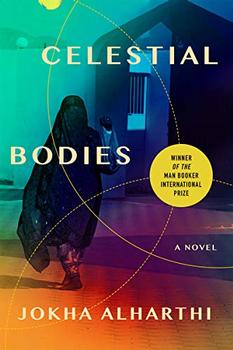Summary | Excerpt | Reading Guide | Reviews | Beyond the book | Read-Alikes | Genres & Themes | Author Bio

The war in Syria has raged for more than eight years now, obliterating cities and homes and casting the people who lived there adrift to seek lives elsewhere. The Map of Salt and Stars, a novel by Jennifer Zeynab Joukhadar, puts a face on the tragedy of the Syrian refugee crisis. The reader experiences it through the eyes of one of the main characters, Nour. Nour's family is Syrian, but she was born and grew up in the United States.
After Nour's father dies of cancer, her family leaves New York City, the only place Nour knows well, and returns to Syria, a country she feels both is and is not her own. The strongest connection she holds to it is through history and story. All of her life, her father told her stories, weaving them out of legends, history and his own creations until they became something tangible, a lens through which Nour could see the world.
One of Nour's favorite stories is about a young, adventurous girl named Rawiya, who journeyed with famed mapmaker al-Idrisi on his voyages and explorations in the effort to make one of history's most famous maps: the Tabula Rogeriana (See Beyond the Book.) Though al-Idrisi is a real historical figure, Rawiya is a character of Joukhadar's creation. But Rawiya and her adventures seem so real to Nour that she begins to believe that maybe they are.
History, myth, and magic play a large role in the novel. In addition to her father's mythical stories, Nour has synesthesia, and sees colors whenever she hears sounds. She also begins to see accumulations of salt. The salt may be a kind of magically sublimated sorrow, a sorrow made tangible by its extremity. After Nour's father died, her mother refused to speak about her grief, and instead "her tears watered everything in the apartment. That winter I found salt everywhere."
Rawiya's story unfolds alongside Nour's in alternating chapters, giving the reader the sense that Rawiya's story is either part of Nour's imagination or a history so distinctly a part of Nour's psyche she gives it equal importance to her own. I began to anticipate Rawiya and Nour crossing paths in some magical way, and the longer the story went on without that happening, the more disappointed I felt. Their stories align in some ways – the vastness of Syria's history, told through the journeys of al-Idrisi and Rawiya is important to Nour and the heart of the novel – but I was left with a feeling of unfulfilled anticipation.
However, this doesn't detract from the vivid beauty of the novel's prose and the importance of its historical metaphor. Joukhadar's language choices lilt with melancholy, elegy, and images so distinct that the reader can smell, taste and touch the world of her creation. Nour describes their house in Homs, Syria:
Inside, the walls breathe sumac and sigh out the tang of olives. Oil and fat sizzle in a pan, popping up in yellow and black bursts in my ears. The colors of voices and smells tangle in front of me like they're projected on a screen: the peaks and curves of Huda's pink-and-purple laugh, the brick-red ping of a kitchen timer, the green bite of baking yeast.
The novel is filled with effortlessly stunning passages like this, a true feat of writing. The most important aspect of the novel, however, is its treatment of history. Though it touches on myth and magic, many of the historical characters like Al-Idrisi are real and an integral part of, not only world history, but Nour's cultural sense of self. The major message of The Map of Salt and Stars is that the destruction of a homeland threatens to destroy history, but that history can never die as long as people, like Nour, choose to remember.
![]() This review was originally published in The BookBrowse Review in June 2018, and has been updated for the
April 2019 edition.
Click here to go to this issue.
This review was originally published in The BookBrowse Review in June 2018, and has been updated for the
April 2019 edition.
Click here to go to this issue.

If you liked The Map of Salt and Stars, try these:

by Jokha Alharthi
Published 2019
In the village of al-Awafi in Oman, we encounter three sisters: Mayya, who marries after a heartbreak; Asma, who marries from a sense of duty; and Khawla, who chooses to refuse all offers and await a reunion with the man she loves, who has emigrated to Canada.

by Mark Oshiro
Published 2019
A story of resilience and loss, love and family, testifying to the vulnerability and strength of a community living within a system of oppression.
Your guide toexceptional books
BookBrowse seeks out and recommends the best in contemporary fiction and nonfiction—books that not only engage and entertain but also deepen our understanding of ourselves and the world around us.